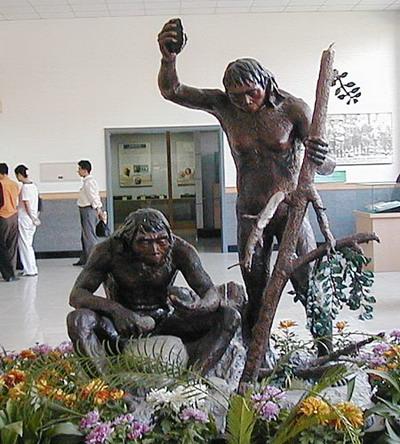
 |
| Peking Man Site at Zhoukoudian (CNTV) |
Watch Video: Peking Man ruins at Zhoukoudian
Date of Inscription: 1987
World cultural heritage: Peking Man Site at Zhoukoudian
Chinese name: Zhou Kou Dian Bei Jing Ren Yi Zhi
English name: Peking Man Site at Zhoukoudian
Approval date: December 1987
Category: cultural heritage
Selection criteria: According to cultural and natural heritage selection criteria C(III)(VI), the Peking Man Site at Zhoukoudian was included in the World Heritage List.
Evaluation of the World Heritage Committee:
The Peking Man Site at Zhoukoudian is located 48 kilometers southwest of Beijing and the scientific investigation on it is still underway. So far, scientists have discovered that Chinese ape-man belongs to the "Peking Man" and they had lived in the Middle Pleistocene times. Meanwhile, scientists also found a variety of articles of daily use, as well as the relics of ancient people living between 18,000 B.C. and 11,000 B.C. The Peking Man Site at Zhoukoudian is not only a piece of rare historical evidence for human society on the Asian continent during ancient times, but can also explain the process of human evolution.
Introduction:
The Peking Man Site at Zhoukoudian is located in the Longgu Mountain in Zhoukoudian Village, Fangshan District, 48 kilometers to the southwest of Beijing. It lies between a mountain area and flatland area, adjoining the North China Plain in the southeast and mountainous region in the northwest. The mountainous land nearby Zhoukoudian Village is mostly composed of limestone and many large and small natural caves were formed through water erosion. There is a natural cave of about 140 meters long from east to west on the mountain, commonly known as the "Ape-man Cave." Since the relics of ancient humans were found in the cave in 1929, it has been called "the First Site at Zhoukoudian."
 |
















 Rainstorms flood more than 10,000 cars in underground garages in Wuhan
Rainstorms flood more than 10,000 cars in underground garages in Wuhan


![]()
